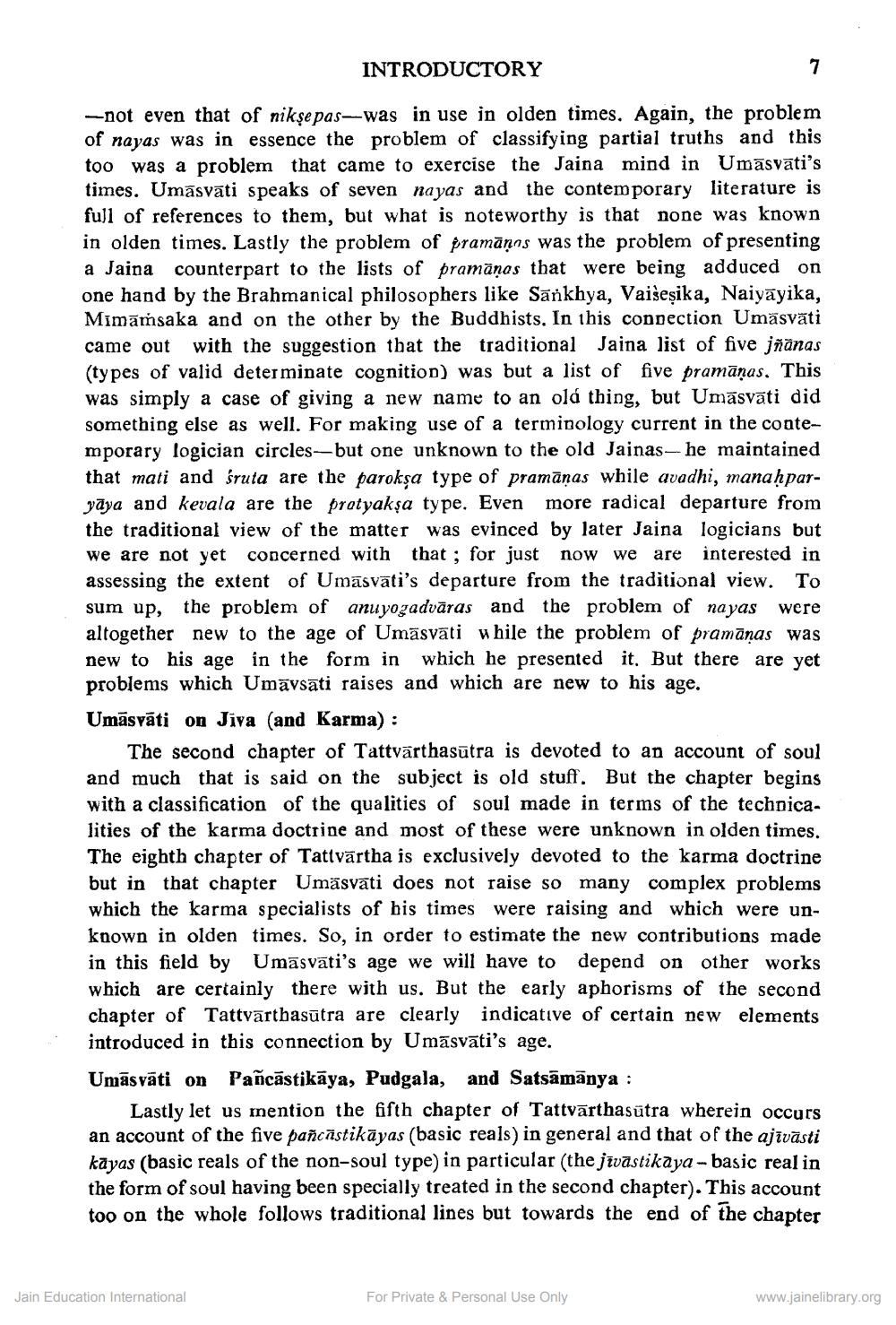________________
INTRODUCTORY
--not even that of niksepas-was in use in olden times. Again, the problem of nayas was in essence the problem of classifying partial truths and this too was a problem that came to exercise the Jaina mind in Umāsväti's times. Umāsvāti speaks of seven nayas and the contemporary literature is full of references to them, but what is noteworthy is that none was known in olden times. Lastly the problem of pramāṇns was the problem of presenting a Jaina counterpart to the lists of pramānos that were being adduced on one hand by the Brahmanical philosophers like Sankhya, Vaiseșika, Naiyāyika, Mimāṁsaka and on the other by the Buddhists. In this connection Umäsväti came out with the suggestion that the traditional Jaina list of five jñānas (types of valid determinate cognition) was but a list of five pramānas. This was simply a case of giving a new name to an olá thing, but Umāsvāti did something else as well. For making use of a terminology current in the contemporary logician circles--but one unknown to the old Jainas-he maintained that mati and śruta are the paroksa type of pramānas while avadhi, manahparyāya and kevala are the pratyakşa type. Even more radical departure from the traditional view of the matter was evinced by later Jaina logicians but we are not yet concerned with that ; for just now we are interested in assessing the extent of Umāsvāti's departure from the traditional view. To sum up, the problem of anuyogadvāras and the problem of nayas were altogether new to the age of Umāsvāti while the problem of pramānas was new to his age in the form in which he presented it. But there are yet problems which Umāvsati raises and which are new to his age. Umāsvāti on Jiva (and Karma):
The second chapter of Tattvārthasūtra is devoted to an account of soul and much that is said on the subject is old stuff. But the chapter begins with a classification of the qualities of soul made in terms of the technica. lities of the karma doctrine and most of these were unknown in olden times. The eighth chapter of Tattvārtha is exclusively devoted to the karma doctrine but in that chapter Umāsvāti does not raise so many complex problems which the karma specialists of his times were raising and which were un known in olden times. So, in order to estimate the new contributions made in this field by Umāsvāti's age we will have to depend on other works which are certainly there with us. But the early aphorisms of the second chapter of Tattvārtbasūtra are clearly indicative of certain new elements introduced in this connection by Umāsvāti's age.
Umāsvāti on Pancāstikāya, Pudgala, and Satsāmānya :
Lastly let us mention the fifth chapter of Tattvārthasūtra wherein occurs an account of the five pañcâstikāyas (basic reals) in general and that of the ajīvāsti kayas (basic reals of the non-soul type) in particular (the jivāstikaya - basic real in the form of soul having been specially treated in the second chapter). This account too on the whole follows traditional lines but towards the end of the chapter
Jain Education International
For Private & Personal Use Only
www.jainelibrary.org




